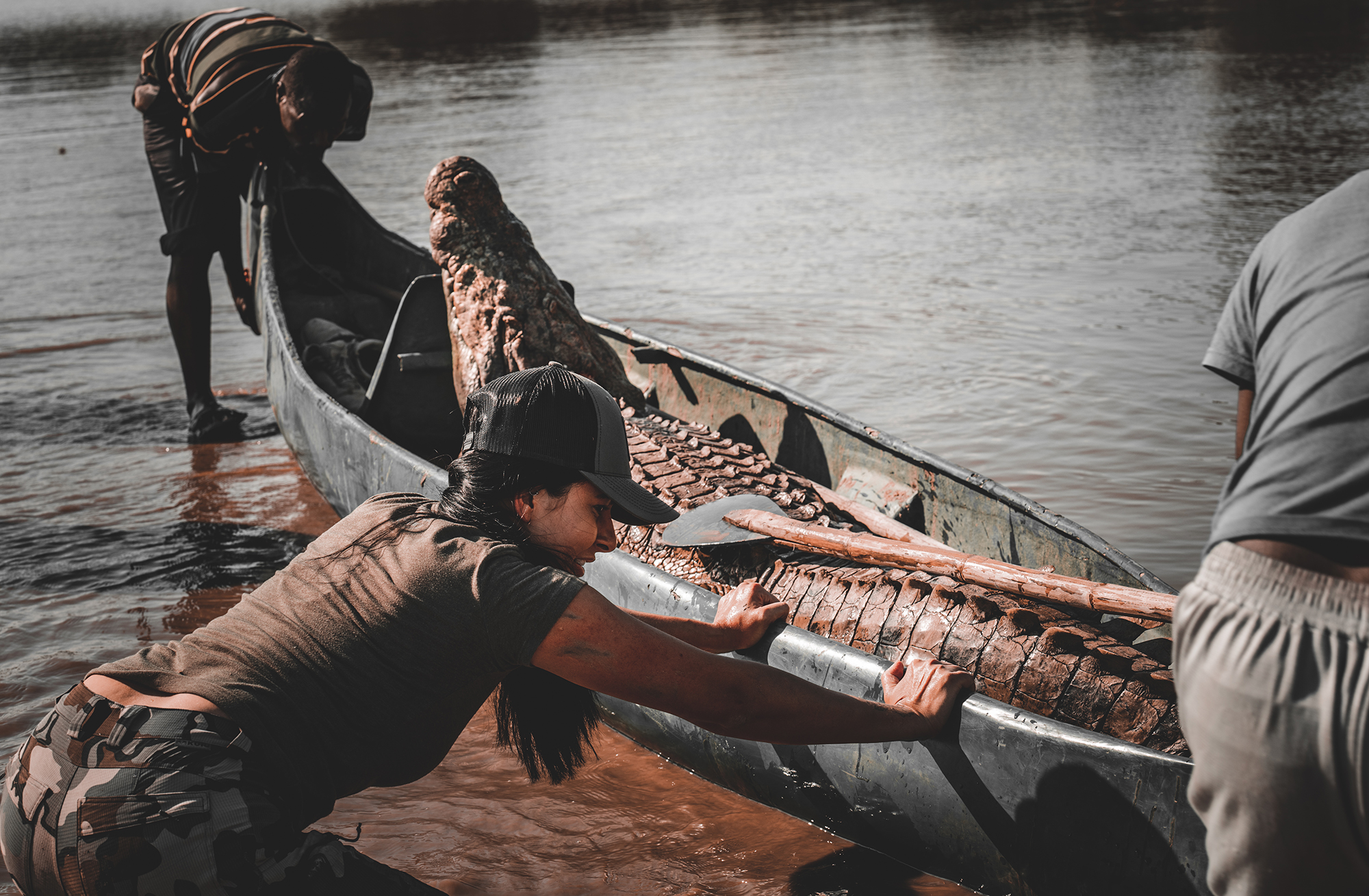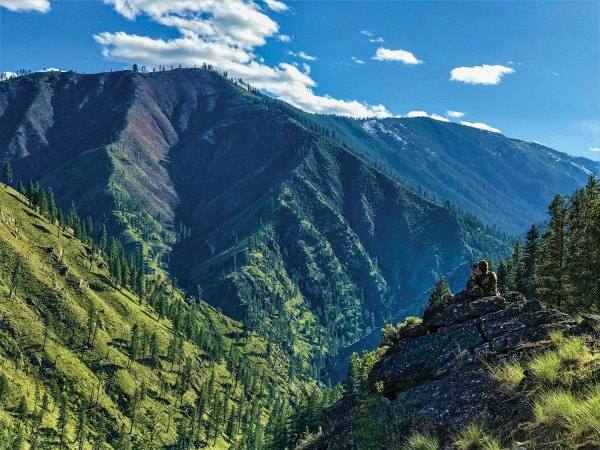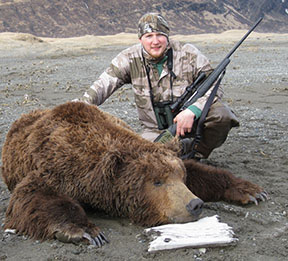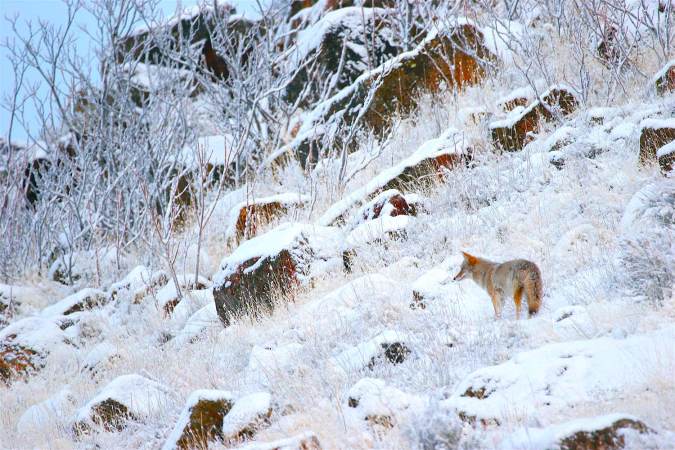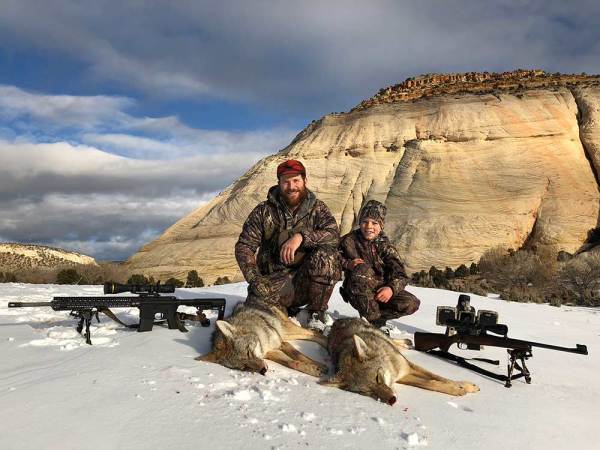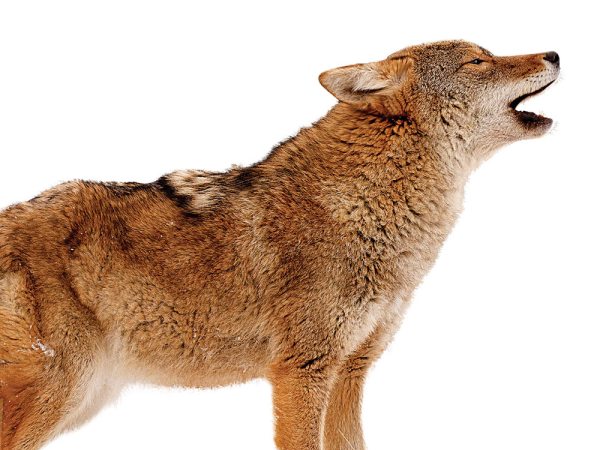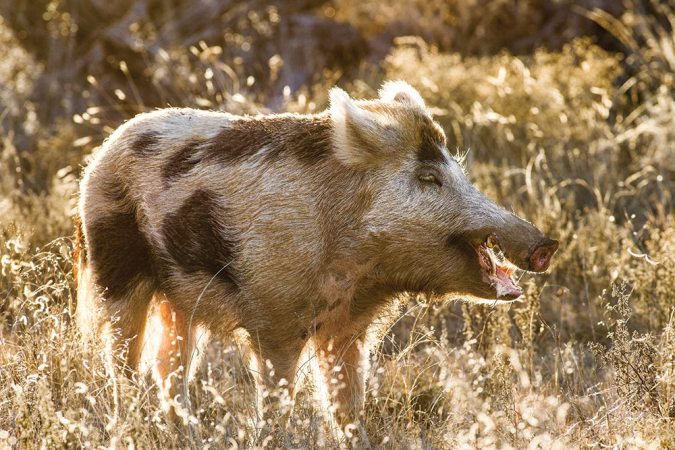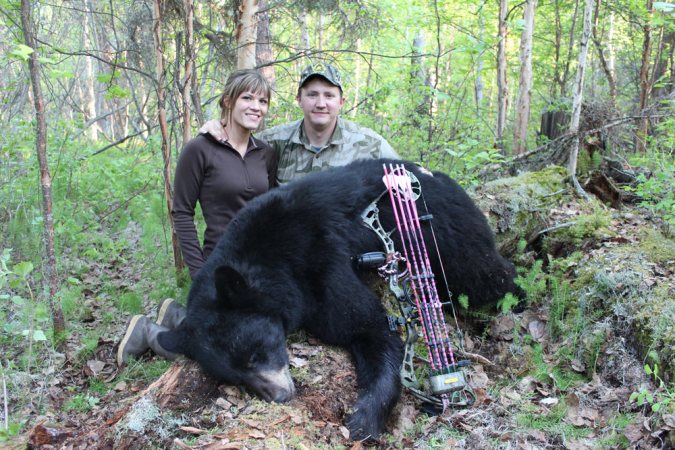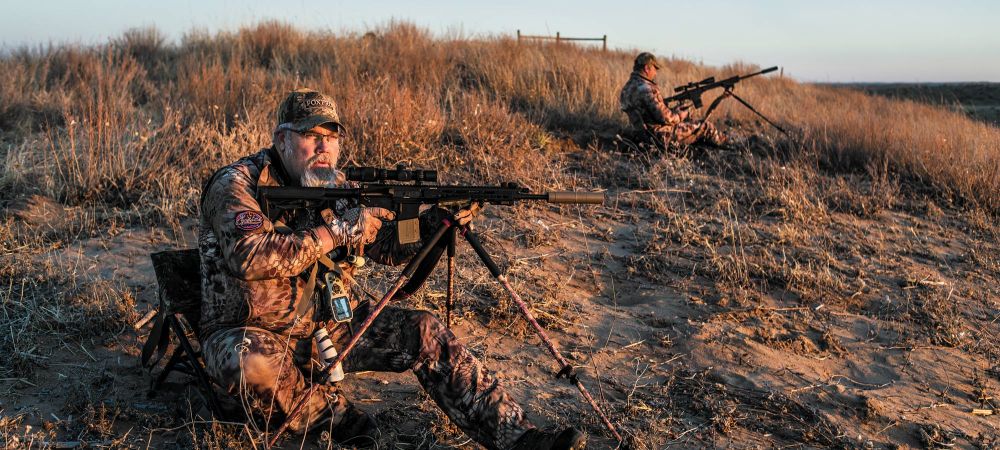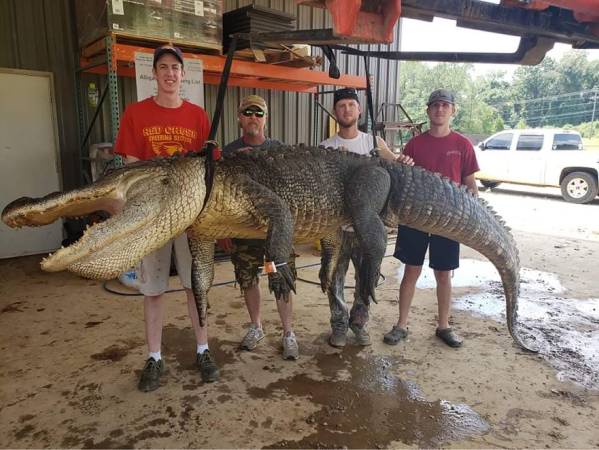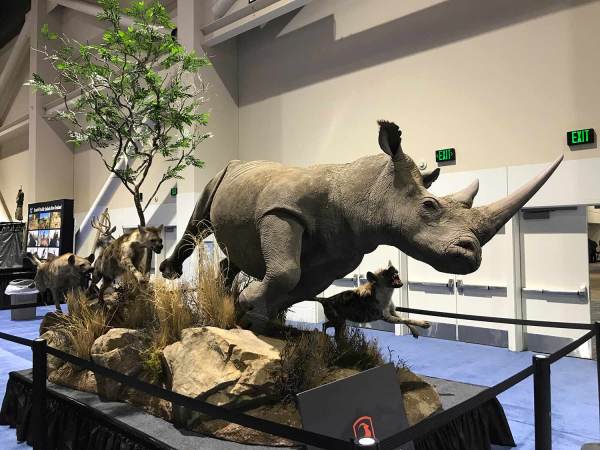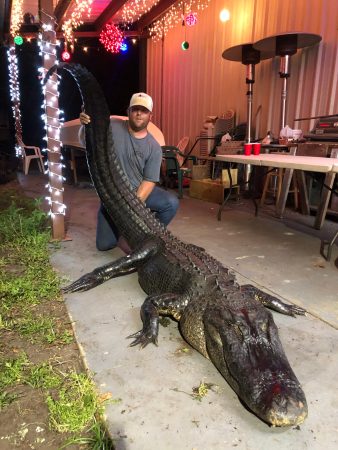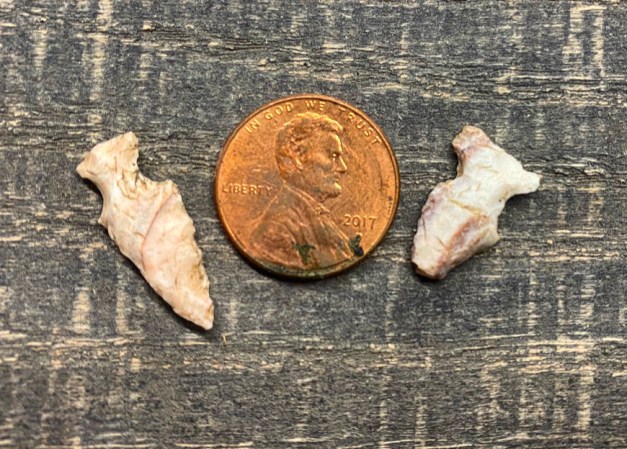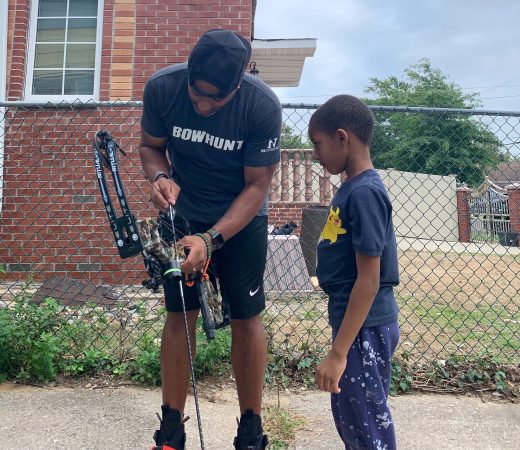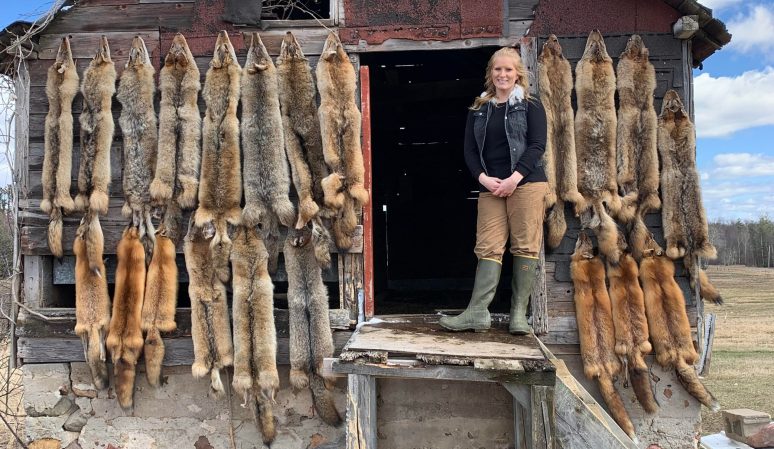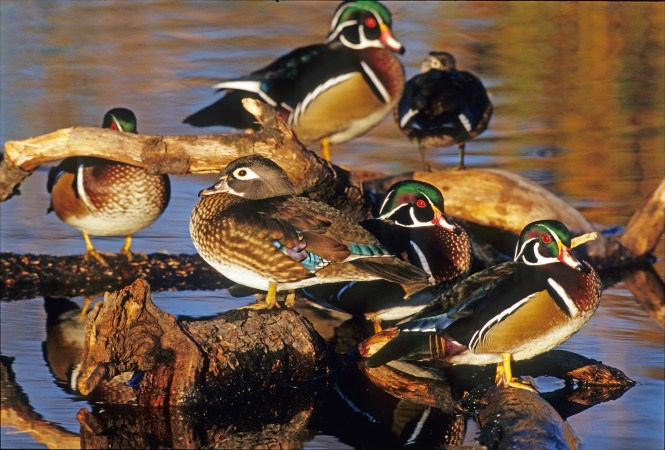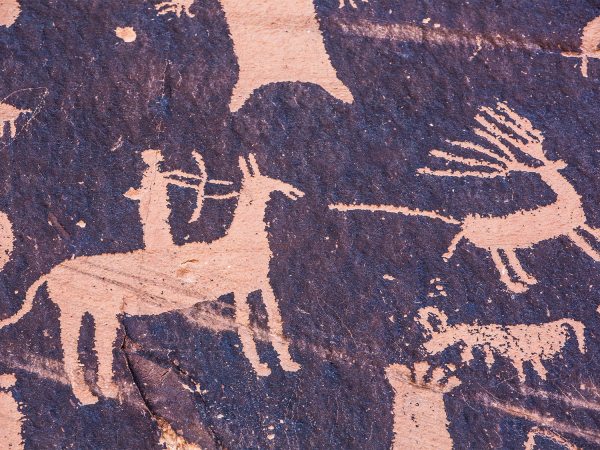The Nile crocodile, in my opinion, is one of the most underrated African game animals. Crocs lurked the Earth’s waters for more than 80 million years (they once hunted dinosaurs), and they now sit at the top of the food chain throughout much of Africa.
Earlier this summer I had the opportunity to hunt these incredible predators on the Luangwa River in Zambia with Backcountry Africa. The Luangwa River is 478 miles long and home to a large population of crocodiles and hippos. During the rainy season the river floods leave behind oxbow lakes, which helps fertilize the valley’s soil. This river is vital to the ecosystem and protection of wildlife in Zambia. It was also the perfect spot to stalk a mature croc. Along the way, I learned a lot about the Nile Crocodile’s characteristics, nature, and history.
Meet the Nile Crocodile
The Nile crocodile has remained virtually unchanged since the Cretaceous period. Amazingly, its prehistoric characteristics still give it an advantage for hunting ungulates, even the less dangerous ones. The Nile crocodile is also feared by many animals (you can see how nervous they get when approaching river banks to drink or cross) but they are also feared by the locals, and for good reason. Everyone here knows someone who has been killed by a croc. Crocodiles have an incredible sensory system in their skin called integumentary sense organs, or ISOs. ISOs allows them to easily detect even the tiniest movements and vibrations in the water.
Read Next: Cape Fear: Hunting Buffalo in the Matetsi Safari Area of Zimbabwe
The top of a crocodile’s head, back, and tail are rock hard, like a thick turtle shell. This armor is not only protective, but it also absorbs heat when they are out sunning themselves. The rest of the skin, from about mid-body down, loses its rigidity. It turns into a tough leathery hide with big scales, but to the touch it’s almost like smooth, wet rubber. A croc’s legs are short but muscular, with five webbed toes and long claws. The head is long, wide, and very flat. This positions their eyes, ears, and nostrils above the water while submerging their body, which allows them to hunt while staying extremely hidden. The jaw is packed with teeth that continuously regrow and replace themselves over a croc’s lifetime The head and teeth are probably what most people fear the most, but for me it’s the tail—It’s pure muscle, and the source of all their power.
They are both hunters and scavengers, so their sense of smell is highly developed. They can smell prey, carcasses, or predators from great distances. Their skin is greenish-brown with yellow undertones. It’s the perfect camouflage to lurk beneath murky waters and patiently wait to seize any unsuspecting soul that gambles at the water’s edge. They are the very definition of ambush hunters. They aggressively launch themselves out of the water with their tail to grab their prey. Crocodiles have even been known to pull people out of canoes while they are fishing or crossing rivers.
Crocodile Conflicts
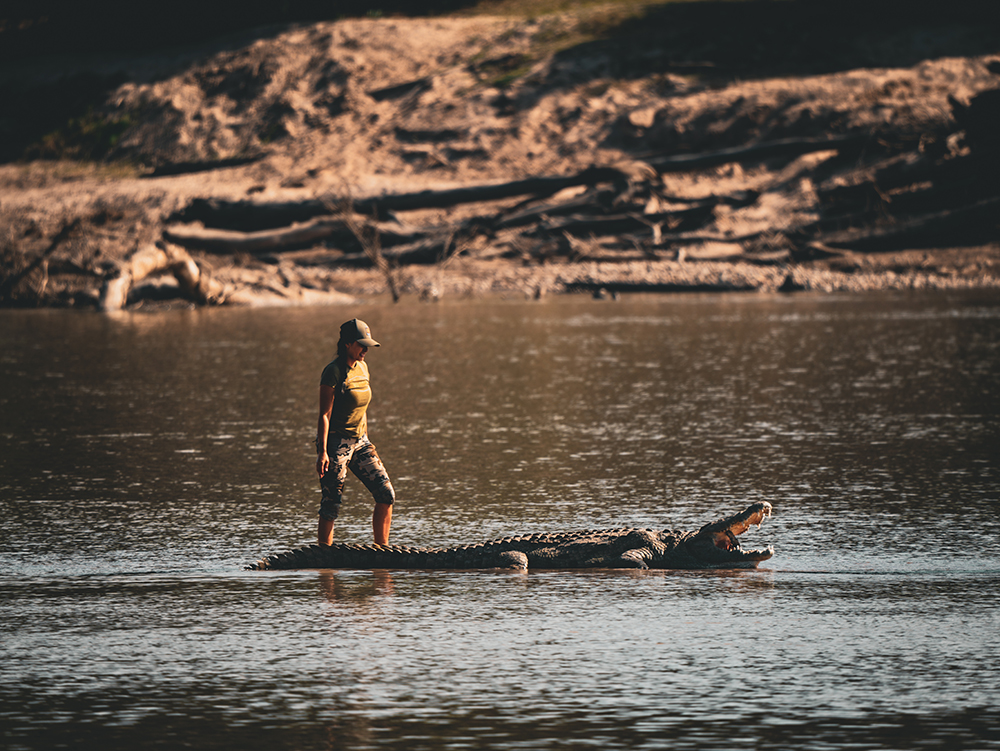
Human-wildlife conflict is a reality for the local villagers. Whenever one of these 13-foot (or larger) dinosaurs is removed from the river, the locals are thrilled. It can be difficult for locals to get excited about crocodile conservation—and why the predator is important to the ecosystem—when a large crocodile is a known killer of humans. When you don’t live every day in croc country, you simply cannot understand what they brave constantly. Think about it like this: Most Americans are separated from predators like mountain lions or grizzly bears when we leave the backcountry and return to town. Locals here live among the crocodiles, and are at risk from crocodile attacks every time they go to the river to fish, get water, and wash. At the same time, humans are the only natural threat that a mature crocodile faces.
Read Next: Tuskless Elephants Are Evolving at a Rapid Pace, Thanks to Ivory Poachers
Crocodiles are also known for killing lots of cattle in Zambia. The locals will poison cow carcasses to kill the crocs that are preying upon their herds. The local fisherman will also spear any crocodile they see. The professional hunter, or PH, in the area told me they have hunted crocodiles with spears stuck in them before. It takes decades for crocodiles to grow to 13 and 16 feet in length. No one wants to see these prehistoric beasts go extinct at the hands of humans. The hunting areas help protect crocodiles by providing funding for anti-poaching measures, and by protecting wild areas so there’s more room for wildlife, which means less conflict with humans.
Hunting Crocs
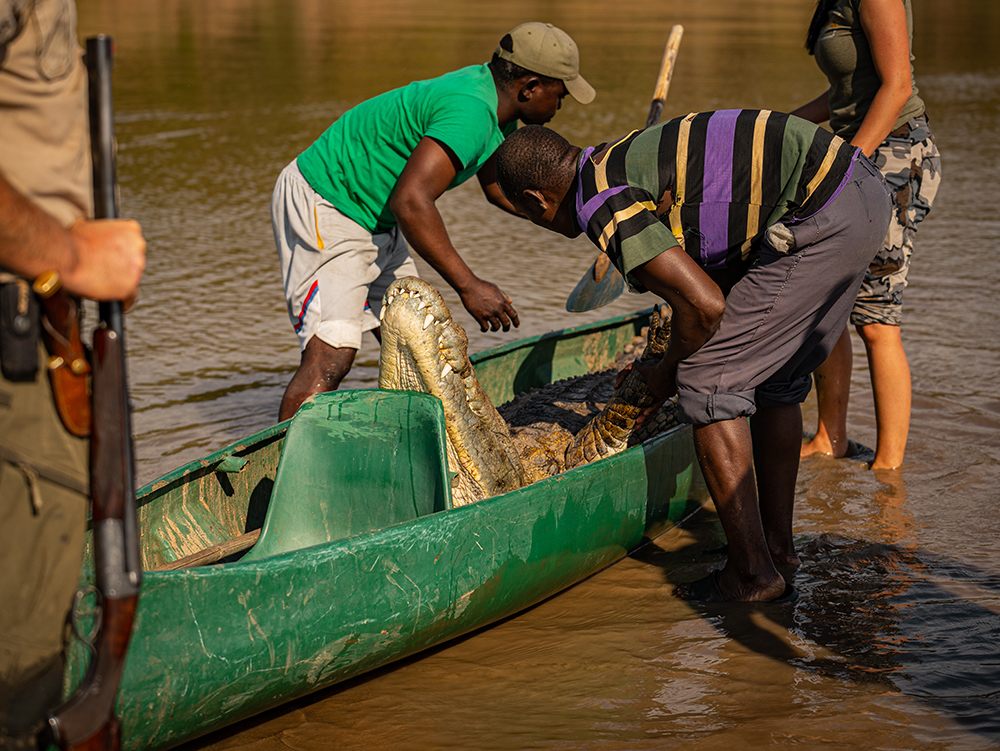
When I decided to hunt the Luangwa River with Backcountry Africa, it was specifically to target a hippo. But I knew if I was presented the opportunity to take a large Nile crocodile, I was going jump on it.
I had hunted alligators before in the swamps of Florida, so I was familiar with the precise shot placement required and adrenaline rush that comes with hunting a big reptile. In Florida we snagged the alligator by throwing a treble hook over his back and sinking the hooks into his skin. With this tactic, the alligator swims off through the canals and you hold onto the fishing rod while he pulls you around in a small john boat. Once he gets tired, he will sink to the bottom and you slowly reel him up. When you get him to the surface, you usually try to harpoon him so he can’t get away, and then use a bangstick to kill them. It’s a rodeo at times, and exhilarating. It was one of my most memorable hunts to date, so I was excited to experience something similar again in Africa.
Except this time, I would be spot-and-stalk hunting the crocodile and shooting one at a distance with a rifle. (The other way to hunt Nile crocs is over bait, but stalking was more appealing to me.) This is one of the most difficult shots to execute on an African game animal because their vital zone is so small: you must shoot them in the brain. Your point of aim is about the size of a golf ball and on the side of the croc’s head. If you miss a croc or wound it, you will probably never see it again.
In the Hunt
We were looking for hippos when we walked up on a large crocodile sunning himself on the water’s edge. We dropped down immediately so that the crocodile couldn’t see us, and we crawled in quietly to get a better look at him. Surprisingly, crocodiles are not easy to field judge. They are often spotted at a distance without any natural features nearby for a size reference. Their tails are usually curled or hanging in the water.
Luckily I was with Russell De La Harpe, one of the founders of Backcountry Africa and my PH in Zambia. He also happens to be a crocodile farmer who supplies the skins for high-end designer brands around the world. For field judging crocodiles he looks at the size of the teeth, how much the spiked the ridges stick up on its back, and the nose—a rounded nose is always a good indicator of an old croc. But by the time we determined our croc was a good one, the reptile had already winded us and slipped abruptly into the water.
Crocodiles are hyper-sensitive animals and always on high alert. Stalking them can be quite the challenge. After he had slipped away, we walked up to where he was laying to get a good look at the tracks his body and head had left in the wet sand. Russ measured the sandy head imprint of its head: 13 inches long. A good rule of thumb, he says, is that every inch of the head corresponds to a foot of body length. In other words, this croc was probably 13 feet long, at least. It had left lots of tracks on that sandy bank and Russell said we didn’t spook him too badly. He expected the croc would be back.
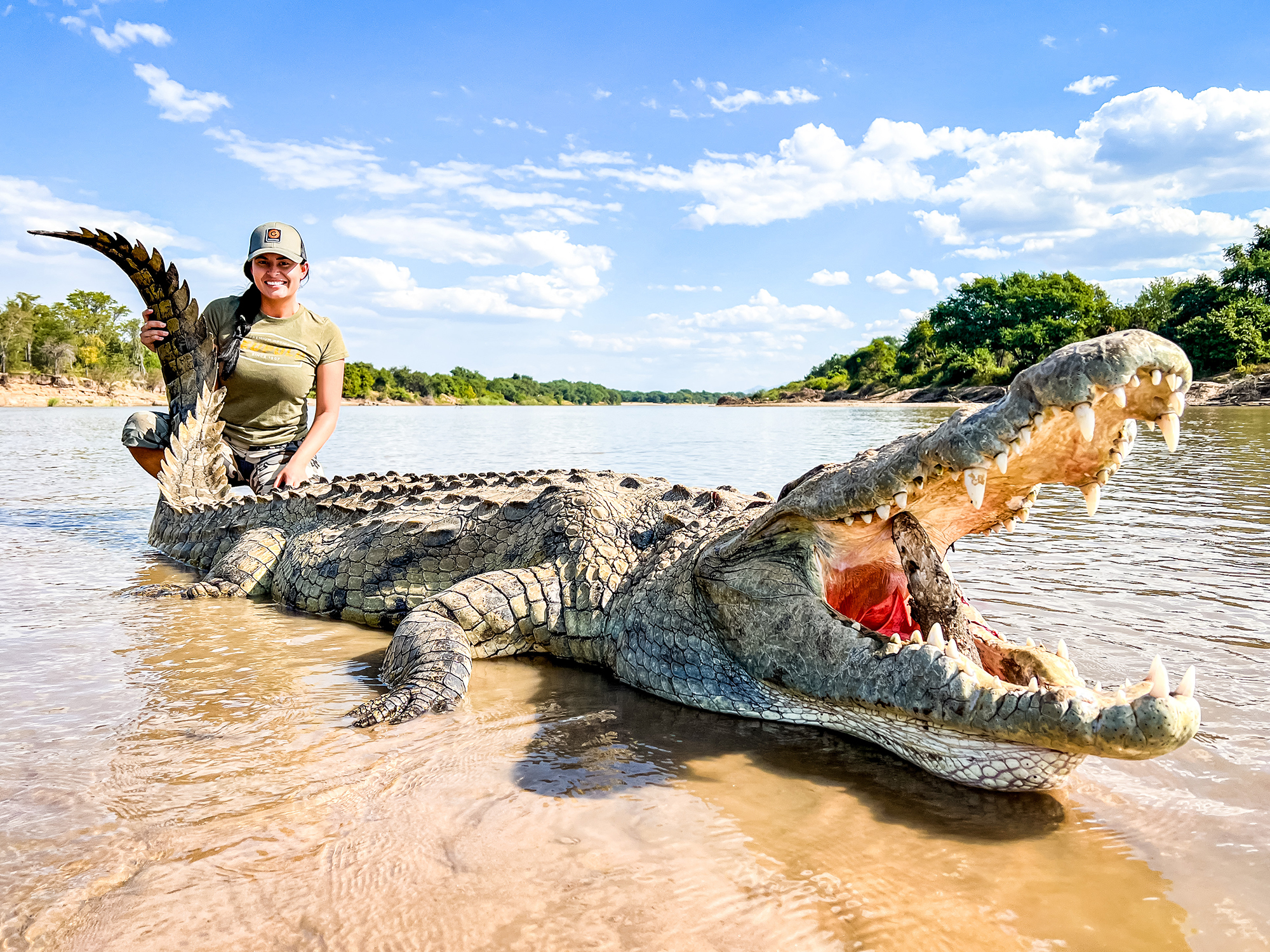
The next day we spotted him again, but this time he was lying in the middle of the Luangwa, on a sandbar. A different PH, Thor, and I crawled to the water’s edge to set up for a 120-yard shot. Before I took it, we decided I would take two shots in quick succession. The first would be to the brain. This was the most important, and would hopefully kill the croc immediately. The second shot would be to the lungs so that if the croc were to slip into the water, he wouldn’t be able to breathe and would pop right back up.
When were all set up for the shot, I loaded the bipod and gently squeezed the back sandbag until I found the sweet spot where my gun wouldn’t budge.
Thor said, “Make sure you are 100 percent steady,” and I knew I was. Safety off. Breathe in. And, just before the exhale, squeeze the trigger.
The shot broke and a Hornady .375 DGX hit home. The croc’s tail started shaking, thrashing back and forth uncontrollably like they seem to do after a proper head shot.
I heard Thor say, “Ok! Again, on his shoulder! Quick! Quick! Quick!”
So, I ran the bolt, squeezed, and hit the croc in the shoulder.
“Ok! Again, on his shoulder or back hip.”
I chambered a third round, squeezed, and sent a final shot into its hip. With that, Thor was satisfied. Multiple shots are wise to ensure a wounded croc doesn’t disappear into the water, but in this case they were just precautionary. The second and third hadn’t been necessary.
After the shot, Thor radioed to the recovery team to bring a boat to our location. The rest of the hunting party heard the call and probably had some questions as to why we needed a boat. They all showed up to help in the recovery and see this Nile croc in person.
Thor, one of the trackers, and I were the first to canoe out to the sandbar. As I walked up to the crocodile through ankle-deep water, I was in awe. He was an absolutely amazing animal. The crocodile looked like he didn’t even belong on this planet, though his kind had been living here for millions of years. I was overcome, grateful for the opportunity to see and touch such an impressive creature in person.
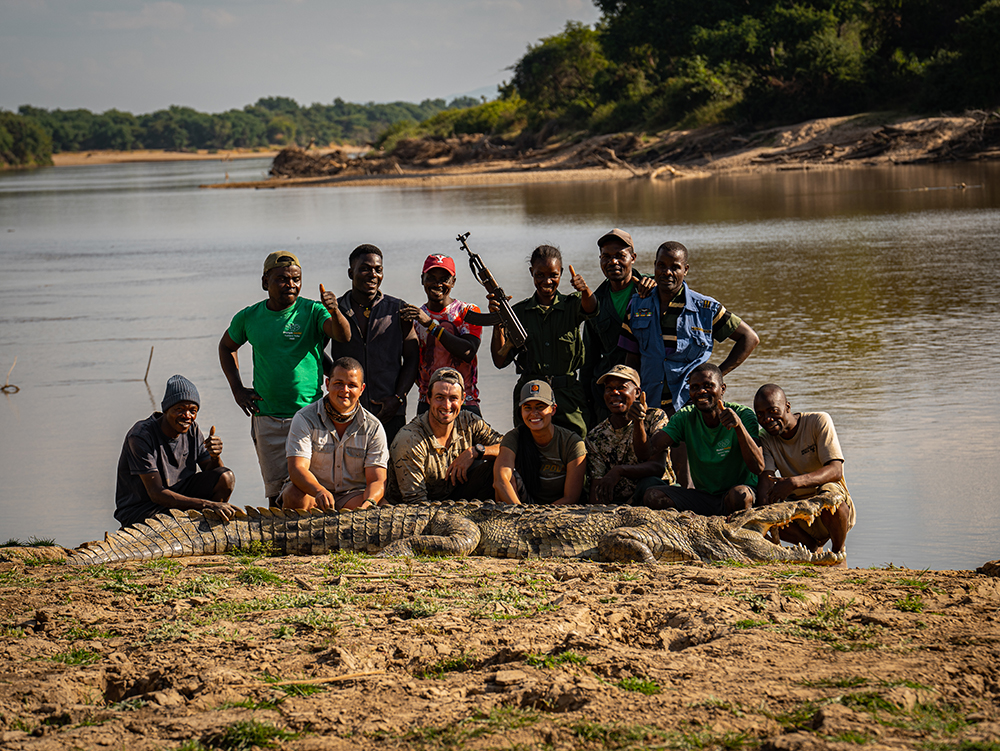
After taking some photos, we loaded the croc into the canoe. The trackers took him ashore and then returned for us. From there, he was loaded onto the truck and taken to the skinning shed. The locals wanted to come see him, too. You can tell how much it means to them when one of these predators is killed. He measured 13 feet, 5 inches. I kept only the hide and the skull. All its meat was smoked, dried, and eaten by the anti-poaching team and camp staff. Some of the animals taken by hunters also get donated to local villages and schools. Nothing, it seems, goes to waste here.
So, if you have ever considered hunting African game, I highly recommend adding the Nile crocodile to your list. It’s a memorable, action-packed hunt that boosts the local economy—and village security. And, like I did, you will learn a ton along the way.
